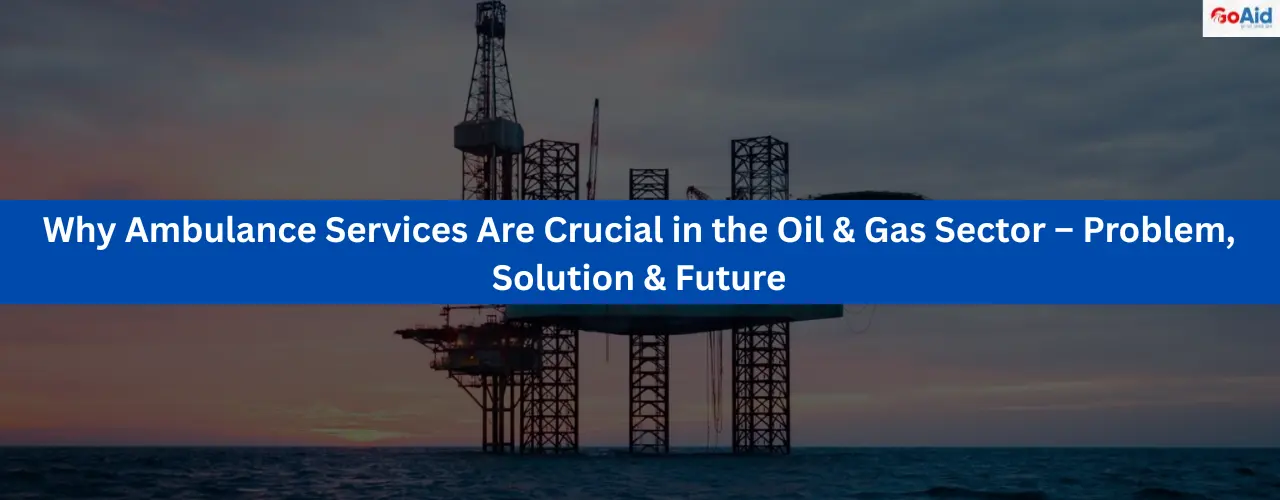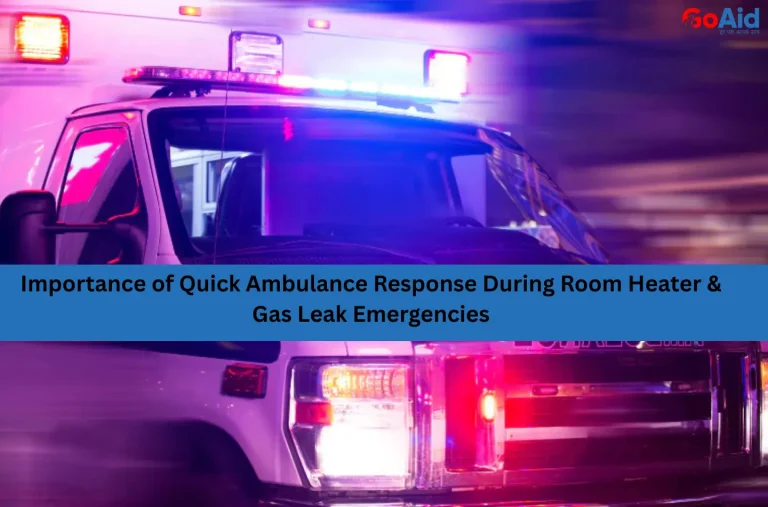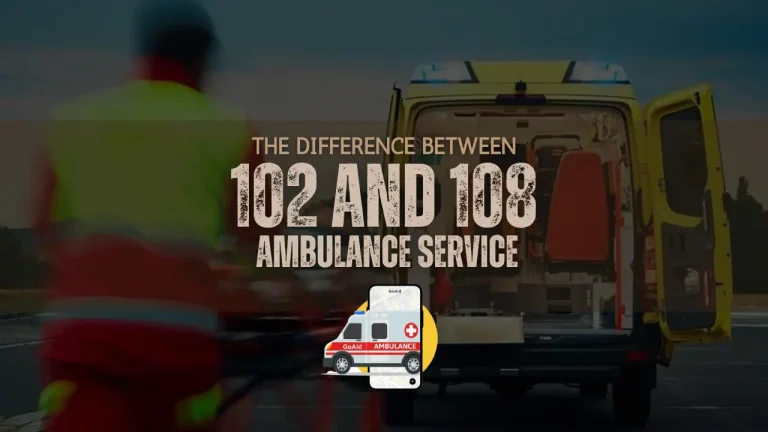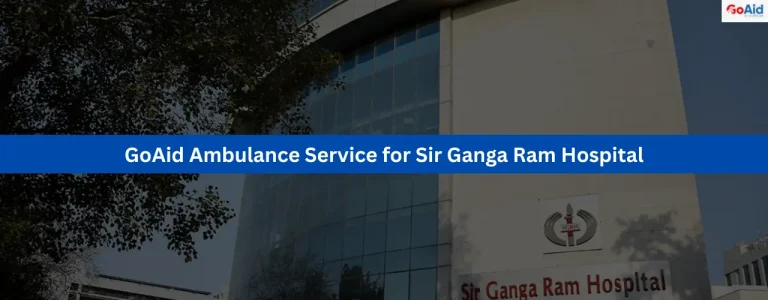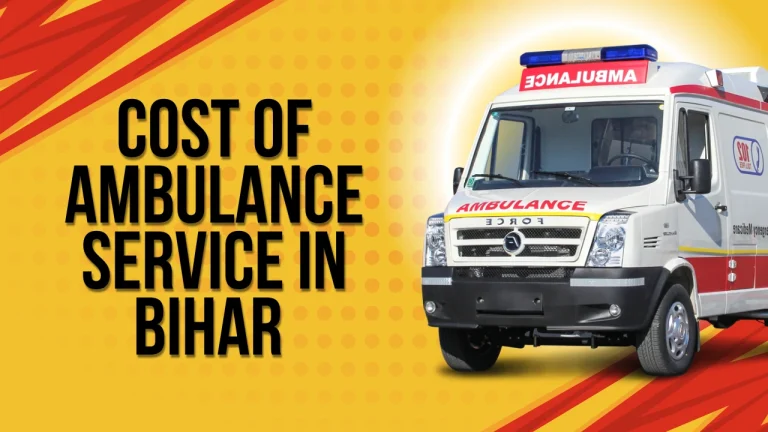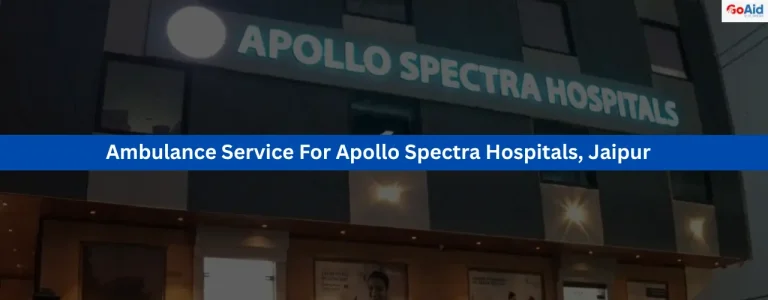The Oil & Gas Sector is a high-risk industry where workers face several hazardous conditions. ThatŌĆÖs why it is important to have ambulance services for the Oil & Gas Sector. These services ensure immediate and timely emergency care during medical emergencies.
This blog provides you the information about the Need for Ambulance Services in the Oil & Gas Sector, Current Challenges in Providing Ambulance Services to the Oil & Gas Sector, and how GoAid can be used as a Reliable Partner for the Oil & Gas Sector. Are you excited to know about it? If your answer is yes, then why wait
LetŌĆÖs start reading
Common Health & Safety Problems in the Oil & Gas Sector
The Oil & Gas Sector presents unique challenges that demand proactive emergency response and reliable ambulance services. Below are some common health and safety issues:
- Burn Injuries from Fire or Explosions: Fires or explosions during drilling or refining operations can cause serious burn injuries, requiring an Oil & Gas Sector injury ambulance for fast response and critical care.
- Inhalation of Toxic Gases: Gas leaks or chemical exposure can lead to respiratory distress. An ambulance in the Oil & Gas Sector ensures oxygen support and emergency care during such incidents.
- Slip and Fall Accidents: Wet, oily, or uneven surfaces often result in slip and fall injuries. Quick first aid on Oil & Gas Sector sites is vital to prevent complications.
- Heat Stroke or Dehydration: High temperatures and long hours can cause heatstroke. Having an on-site ambulance service helps manage sudden collapses with immediate cooling and hydration treatments.
- Fractures from Heavy Equipment: Falling tools or machinery accidents often cause fractures. A dedicated ambulance for worker safety can stabilize and transport injured workers safely.
- Cardiac Emergencies: Stressful working conditions and remote locations make cardiac arrests dangerous. A medical emergency in the Oil & Gas Sector needs prompt ambulance support with trained paramedics.
- Electrical Shocks: Contact with live wires or faulty equipment can lead to serious electrical injuries. A timely response with an Oil & Gas Sector ambulance service can save lives.
- Chemical Burns or Spills: Exposure to corrosive materials during spills can cause skin damage or poisoning. Ambulance for Oil & Gas Sector sites ensures decontamination and fast hospital transfer.
Why Ambulance Services Are Essential for the Oil & Gas Sector
The Oil & Gas Sector requires a rapid emergency response to handle injuries and health issues. Reliable ambulance for Oil & Gas Sector operations ensures worker safety, compliance, and life-saving interventions during critical incidents.
- Rapid Emergency Response: In the event of a fire, explosion, or collapse, having an on-site ambulance service ensures injured workers receive immediate attention, reducing the risk of long-term damage or fatalities in the Oil & Gas Sector.
- Worker Safety Compliance: Government and industry standards demand emergency care infrastructure. A dedicated ambulance at Oil & Gas Sector sites ensures legal compliance while prioritizing worker safety and well-being.
- High-Risk Work Environment: The Oil & Gas Sector involves high temperatures, flammable materials, and heavy machinery. These hazards make having an ambulance service critical for handling sudden health and safety emergencies.
- Remote Locations: Many operations are in remote fields or offshore platforms. An ambulance for the Oil & Gas Sector stationed nearby ensures a timely medical emergency response without relying on distant hospitals.
- Support for First Aid Response: Quick access to first aid on Oil & Gas Sector sites can prevent worsening of injuries. Ambulance staff offer stabilizing treatments before transporting workers to hospitals.
- Disaster Preparedness: Explosions, gas leaks, or equipment failures require a pre-established emergency response, Oil & Gas Sector strategy. Ambulances are key to minimizing injuries during mass casualty events.
- Handling Severe Injuries: Industrial accidents often result in serious trauma. An Oil & Gas Sector injury ambulance equipped with life-saving tools is essential for managing burns, fractures, and chemical exposure.
- Operational Continuity: Reliable Oil & Gas Sector ambulance service ensures quick response and injury management, helping avoid operational halts and maintaining workforce confidence in hazardous work zones.
Types of Ambulance Services Might be Required in the Oil & Gas Sector
The Oil & Gas Sector needs multiple ambulance types for different emergencies. Choosing the right ambulance for worker safety ensures comprehensive emergency care and faster recovery outcomes.
- Basic Life Support (BLS) Ambulance: A BLS ambulance is used for transporting patients with stable vital signs who need basic monitoring and first aid. Ideal for non-critical but urgent cases like minor injuries or fainting spells.
- Advanced Life Support (ALS) Ambulance: An ALS ambulance is staffed with trained paramedics and equipped with advanced life-saving tools. It’s essential for trauma care, cardiac arrests, and critical emergency response in the Oil & Gas Sector areas.
- ICU Ventilator Ambulance: Critical patients with life-threatening injuries or respiratory failure require an ICU ambulance with ventilators and advanced monitoring systems. It supports safe transfer from Oil & Gas Sector to specialized hospitals.
- First Aid Van: This van provides rapid first aid on Oil & Gas Sector locations for minor burns, cuts, and injuries. ItŌĆÖs ideal for continuous on-site support during daily operations or safety drills.
- Fire & Burn Care Ambulance: Specifically designed to handle burn injuries in Oil & Gas Sector, these ambulances are equipped with burn kits, cooling systems, and trained responders for thermal and chemical burn management.
- Spill Response Ambulance: In cases of toxic or chemical spills, this ambulance supports emergency care by providing decontamination showers, protective gear, and treatment for chemical exposure at Oil & Gas Sector sites.
- Interstate Emergency Ambulance: When workers need urgent transfer to specialized facilities in another state, this Oil & Gas Sector ambulance service ensures uninterrupted critical care throughout the journey.
- Standby Ambulance for Shutdowns & Drills: During high-risk events like plant shutdowns or fire drills, a standby ambulance in the Oil & Gas Sector ensures quick action in case of sudden injury or collapse.
Also Read: Difference between BLS Ambulance and ALS Ambulance
Current Challenges in Providing Ambulance Services to the Oil & Gas Sector
In India, despite its high-risk nature, the Oil & Gas Sector faces several obstacles in maintaining consistent, efficient ambulance services. These challenges reduce the effectiveness of emergency response and can put worker safety at serious risk.
- Remote and Isolated Worksites: Many Oil & Gas Sector operations are located in remote or offshore areas, making it difficult to deploy on-site ambulance service quickly during a medical emergency.
- Limited Infrastructure: Poor road connectivity or lack of helipads often delays ambulances for Oil & Gas Sector facilities, especially during natural disasters or equipment failures.
- Shortage of Trained Paramedics: Many Oil & Gas Sector ambulance services lack specialized paramedics who are trained to handle industrial trauma and chemical-related injuries efficiently.
- Delayed Emergency Response: The absence of a permanent ambulance at Oil & Gas Sector sites can lead to slow emergency response, especially during off-hours or shift changes.
- Cost Constraints: Companies sometimes cut down on full-time ambulances for worker safety due to budget limitations, risking timely access to emergency care.
- Communication Gaps: Inefficient communication between control rooms and ambulance units hampers emergency response, Oil & Gas Sector coordination, leading to unnecessary delays.
- Lack of Customized Ambulances: Most Oil & Gas Sector ambulance services do not include specialized features like burn care or chemical decontamination units, making them ineffective for certain emergency types.
- Regulatory Hurdles: Compliance with state-wise rules for interstate ambulance service or licensing delays often impacts the availability of legal and fully-equipped ambulance services in this sector.
How Can These Problems Be Solved?
The Oil & Gas Sector must upgrade its approach to deploying and managing ambulance services. Here are key solutions to tackle the common challenges in Oil & Gas Sector ambulance service delivery.
- Deploy Permanent On-Site Ambulances: Stationing a dedicated ambulance at Oil & Gas Sector sites can eliminate response delays and offer 24/7 support for any medical emergency.
- Upgrade Infrastructure: Investing in access roads, helipads, and GPS systems can make it easier for ambulances in Oil & Gas Sector sites to operate smoothly in remote regions.
- Train Industrial Paramedics: Collaborate with providers like GoAid to train paramedics in Oil & Gas Sector injury ambulance handling, burn care, trauma response, and chemical exposure.
- 24/7 Emergency Command Centers: Setting up real-time control rooms with ambulance integration improves emergency response Oil & Gas Sector coordination across shifts and remote locations.
- Allocate Safety Budgets: Companies must prioritize budgets for ambulance for worker safety and view them as essential operational resources, not optional add-ons.
- Digitize Communication Channels: Mobile apps and GPS-enabled communication systems can streamline calls and ambulance tracking for better on-site ambulance service access.
- Use Specialized Ambulance Fleet: Employ a mix of BLS, ALS, ICU, burn care, and decontamination units for varied needs across the Oil & Gas Sector ambulance service demands.
- Simplify Regulatory Approvals: Partner with experienced service providers to handle licensing, insurance, and compliance for interstate ambulance service in the Oil & Gas Sector more efficiently.
Know More: Why Mining Industry Need Ambulances? ŌĆō Problem, Solution & Future
Future of Emergency Medical Services in the Oil & Gas Sector
The future of emergency medical services in the Oil & Gas Sector is rapidly evolving with advancements in technology, policy reforms, and industry awareness about worker safety. As high-risk operations become more complex, the integration of AI-based monitoring, GPS-enabled ambulance for Oil & Gas Sector, and telemedicine will allow faster diagnosis and response, even in offshore or remote fields. These innovations, combined with dedicated on-site ambulance services, will ensure quicker stabilization and transport of injured personnel, reducing the severity of medical emergencies in Oil & Gas Sector.
Furthermore, we can expect tighter safety regulations requiring companies to maintain a 24/7 ambulance at Oil & Gas Sector sites with trained industrial paramedics and equipment for chemical, burn, and trauma care. Services like GoAid are expected to lead the way with customizable Oil & Gas Sector ambulance services, offering BLS, ALS, ICU, and spill-response ambulances under government-approved rates. The future promises a more connected, responsive, and worker-centric approach to emergency care, ensuring greater protection for IndiaŌĆÖs energy workforce.
Worker Welfare and Corporate Social Responsibility for the Oil & Gas Sector
In India, modern Oil & Gas Sector companies are expected to go beyond legal compliance by adopting ambulance services as part of Corporate Social Responsibility (CSR) and worker welfare initiatives, enhancing safety and trust at workplaces.
- Proactive Safety Culture: Offering an ambulance for worker safety reflects a strong safety-first approach, promoting physical and emotional well-being among employees and contract workers.
- Improved Emergency Access: Deploying on-site ambulance service helps workers feel secure, knowing that emergency care is just moments away during high-risk operations.
- CSR Alignment: Incorporating the Oil & Gas Sector ambulance service into CSR initiatives showcases the companyŌĆÖs dedication to health equity and emergency infrastructure for workers.
- Health Camps & Checkups: Regular medical checkups via ambulance services promote preventive care and early diagnosis for chronic issues common in the Oil & Gas Sector.
- Worker Retention & Morale: Employees feel valued when emergency care is a priority, improving retention, trust, and productivity in hazardous environments.
- Local Community Support: Companies offering ambulances in Oil & Gas Sector sites often extend services to nearby rural communities during emergencies, boosting public goodwill.
- Disaster Relief Participation: Partnering with agencies like GoAid for emergency response Oil & Gas Sector enables quick deployment of resources during major industrial or natural disasters.
- Ethical Responsibility: Providing a robust Oil & Gas Sector ambulance service aligns with global ethical standards and sustainability goals focused on safe, humane work conditions.
How Can GoAid Be Used as a Reliable Partner for the Oil & Gas Sector?
GoAid Ambulance Service offers specialized, rapid, and reliable ambulance services tailored to the unique needs of the Oil & Gas Sector. Their expertise ensures fast emergency response, worker safety, and compliance with industry standards.
- Quick 10-Minute Response Time: GoAid guarantees a rapid on-site ambulance service response within 10 minutes of booking, critical for managing medical emergencies in the Oil & Gas Sector workplaces.
- Diverse Ambulance Fleet: GoAid provides a range of ambulances, including BLS, ALS, ICU ventilator, and burn care units, ensuring comprehensive emergency care for all injury types in the sector.
- Trained Industrial Paramedics: Their paramedic teams specialize in handling Oil & Gas Sector injury ambulance cases, including trauma, burns, and chemical exposures, with expert first aid and advanced care.
- 24/7 Availability: GoAid operates round-the-clock, offering uninterrupted ambulance for Oil & Gas Sector even during night shifts, holidays, or remote site operations.
- Multi-Modal Transport Options: Whether road or air ambulance is needed, GoAid facilitates swift interstate transfers, providing reliable interstate ambulance service for critical patient evacuation.
- Government-Approved and Affordable: GoAid ensures compliance with all legal mandates, offering ambulance at Oil & Gas Sector sites at government-approved, affordable rates to suit company budgets.
- Digital Booking & Tracking: Their easy-to-use app and call center enable quick booking and real-time ambulance tracking, improving emergency response, Oil & Gas Sector coordination, and transparency.
- Customized Safety Solutions: GoAid works closely with companies to design tailored Oil & Gas Sector ambulance services that fit specific operational risks and regulatory requirements, enhancing overall worker safety.
Case Study
Case Study 1: Adani GroupŌĆÖs Partnership with GoAid for Oil & Gas Sector Safety
Adani Group, a major player in IndiaŌĆÖs Oil & Gas Sector, partnered with GoAid to enhance emergency response and ambulance services at their multiple oil fields and refineries. Recognizing the critical need for fast, reliable on-site ambulance service, Adani implemented GoAidŌĆÖs fleet, including ICU and ventilator-equipped ambulances. The partnership improved worker safety through quick access to specialized emergency care, ensuring compliance with safety regulations. With GoAidŌĆÖs ambulance for Oil & Gas Sector, Adani successfully minimized injury-related downtime and boosted worker confidence in emergency preparedness.
Case Study 2: Tata GroupŌĆÖs Industrial Safety Upgrade with GoAid Ambulance Service
Tata Group integrated GoAidŌĆÖs ambulance at Oil & Gas Sector service across their industrial complexes to address common health and safety challenges. Utilizing GoAidŌĆÖs Oil & Gas Sector ambulance service, Tata ensured immediate availability of trained paramedics and diverse ambulance types like BLS and ALS for effective first aid on site. The 24/7 emergency response Oil & Gas Sector service enhanced TataŌĆÖs compliance with legal safety mandates while strengthening their commitment to worker welfare and rapid medical emergency management, reducing accident fatalities and improving overall site safety culture.
Conclusion on the Need for Ambulance Services in the Oil & Gas Sector
The Oil & Gas Sector is inherently high-risk, with potential for serious injuries and medical emergencies. Having dedicated ambulance services for the Oil & Gas Sector is not just a regulatory requirement but a vital step to protect worker safety. Quick access to specialized on-site ambulance services ensures timely emergency care that can save lives and minimize the impact of accidents. Effective emergency response in the Oil & Gas Sector improves operational continuity and builds a culture of safety and trust among employees.
In India, with evolving safety standards and technological advancements, investing in a reliable Oil & Gas Sector ambulance service is essential for future readiness. Partnering with trusted providers like GoAid ensures compliance, affordability, and expert medical support tailored to industry needs. Prioritizing ambulance availability helps companies fulfill their legal and ethical obligations while safeguarding the health of their workforce in this demanding sector.
Call-to-Action (CTA):
Ensure the highest standard of emergency care for your Oil & Gas operations. Partner with GoAid Ambulance Service today for reliable, 24/7 ambulance services designed specifically for the Oil & Gas Sector. Book now for safety you can trust!
FAQs on the Need for Ambulance Services in the Oil & Gas Sector
Question 1: Why are ambulances needed at Oil & Gas Sector hubs?
Answer: Ambulances are essential at Oil & Gas Sector hubs to provide immediate emergency care for accidents, burns, or chemical exposures, ensuring quick medical response and saving lives.
Question 2: What types of injuries are common in the Oil & Gas Sector?
Answer: Common injuries include burns, fractures, chemical exposure, respiratory issues, trauma from falls, and equipment-related accidents requiring specialized ambulance services.
Question 3: Is it mandatory to have ambulance services in the Oil & Gas Sector in India?
Answer: Yes, legal regulations mandate having on-site ambulance services at Oil & Gas facilities to comply with safety norms and ensure timely medical emergency response.
Question 4: Can private companies provide ambulance services to the Oil & Gas Sector?
Answer: Yes, private providers like GoAid offer specialized Oil & Gas Sector ambulance services with trained paramedics and equipped vehicles meeting industry requirements.
Question 5: What should the Oil & Gas Sector look for in an ambulance service provider?
Answer: Look for quick response times, trained paramedics, diverse ambulance types, 24/7 availability, government approvals, and experience in emergency response Oil & Gas Sector situations.
Question 6: What is an on-site ambulance service?
Answer: An on-site ambulance service means having a fully equipped ambulance and medical team stationed within or near the Oil & Gas facility for rapid emergency response.
Question 7: How does an ambulance service improve worker safety for Oil & Gas Sector?
Answer: Ambulance services ensure fast emergency care, reduce response times, provide expert first aid, and facilitate safe transport, enhancing overall worker safety and confidence.
Question 8: Can ambulance services be customized based on the Oil & Gas Sector?
Answer: Yes, ambulance services can be tailored with specialized equipment, paramedics trained in industrial injuries, and vehicles suited to hazardous site conditions.
Question 9: Are there any legal obligations for emergency medical support in the Oil & Gas Sector?
Answer: Yes, Indian laws and safety regulations require Oil & Gas companies to provide on-site ambulance services to manage occupational hazards effectively.
Question 10: How much does hiring an ambulance service for the Oil & Gas Sector cost?
Answer: Costs vary based on ambulance type, distance, and services, but providers like GoAid offer affordable, government-approved rates tailored for the Oil & Gas Sector.
Question 11: Do ambulance providers offer trained paramedics along with the vehicle?
Answer: Yes, reputable ambulance providers supply trained industrial paramedics skilled in managing chemical, trauma, and burn injuries specific to Oil & Gas environments.
Question-12: Can ambulances be equipped with trauma kits for Oil & Gas Sector hubs related injuries?
Answer: Absolutely, ambulances servicing Oil & Gas hubs are equipped with advanced trauma kits, ventilators, burn care supplies, and other necessary emergency medical equipment.
Question 13: How fast can an on-site ambulance respond compared to city emergency services?
Answer: On-site ambulances typically respond within 10-15 minutes, much faster than city services, enabling quicker emergency response Oil & Gas Sector and better patient outcomes.
Question 14: How does having an ambulance affect insurance and liability claims?
Answer: Having a dedicated ambulance service supports faster medical care, reducing injury severity and liability risks, often resulting in smoother insurance claims and regulatory compliance.
Question 15: Is a 24/7 ambulance service necessary for Oil & Gas Sector hubs?
Answer: Yes, continuous 24/7 ambulance availability is crucial due to round-the-clock operations and the unpredictable nature of industrial accidents in the Oil & Gas Sector.

